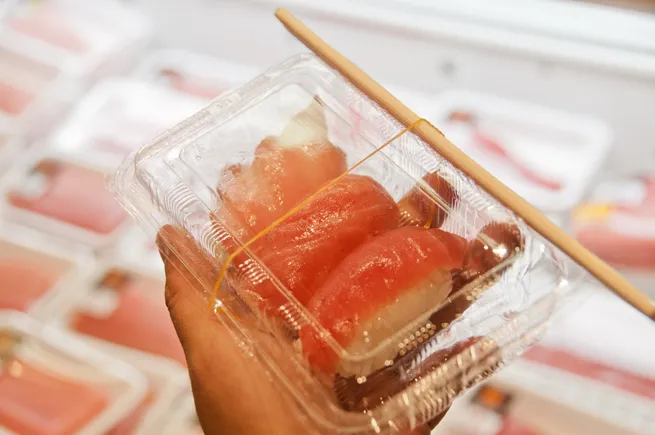In today’s grocery landscape, customers are not just looking for ingredients, but for ready-to-eat meals. With inflation and high restaurant prices leading consumers to dine at home more often and reduce their use of restaurant delivery services, there is a growing demand for quality, convenient food options. Grocery stores have adapted to this trend by offering made-to-order sandwiches, salads, soups, and hot food bars, effectively transforming into mini quick-service restaurants.
According to Chris Dubois, executive vice president of Circana, a leading market research and technology company, these efforts have yielded positive results. However, not all deli categories are experiencing the same level of success. While the overall deli category has seen a 3% increase, deli meat sales have declined by 7.1%. To boost service deli sales, Dubois suggests that grocers explore opportunities to expand the category with sushi.
The popularity of sushi has been on the rise, with sales growing by 63% in the last four years to over $2.5 billion annually. Dubois emphasizes the significant benefits of adding sushi to grocery store offerings, citing consumer demand as a key driver. A recent Circana survey conducted on behalf of the Alaska Seafood Marketing Institute revealed that 91% of respondents are likely to purchase sushi, making it the most preferred deli item. Additionally, sushi has proven to be a top-performing category in terms of attracting new buyers and driving repeat purchases, particularly among Generation Z consumers.
Expanding sushi offerings beyond traditional rolls presents a lucrative opportunity for grocers. Dubois highlights the potential for growth through introducing prepared foods like poke bowls and seafood-as-an-ingredient meals. Alaska Surimi, a premium-quality, fully-cooked seafood product made from wild Alaska pollock, is a versatile and cost-effective ingredient that can enhance sushi offerings.
When it comes to marketing sushi in the deli department, labeling plays a crucial role in conveying premium quality to consumers. Labels such as “Alaska” and “wild-caught” are highly valued attributes that enhance the perceived freshness and quality of sushi products. The Circana study found that highlighting these labels can significantly influence consumer purchasing decisions.
To successfully integrate sushi into the deli department, grocers should focus on creating exciting promotions and maintaining consistency in their offerings. Midweek promotions, such as buy-one-get-one deals or complimentary side items, can drive traffic and increase customer engagement. Collaborations with seafood partners, like the partnership between FujiSan Handcrafted Sushi and Alaska Seafood, can further elevate the visibility of sushi products and generate consumer interest.
In addition to promoting sushi through giveaways and social media campaigns, grocers can leverage consumer preferences to drive sales. Offering sushi in individual servings, highlighting Alaska-sourced ingredients, and providing year-round availability are key strategies to maximize consumer appeal and drive sales growth. By measuring the impact of sushi sales on overall store revenue, grocers can capitalize on the potential to increase basket size and attract a desirable demographic.
In conclusion, sushi presents a significant growth opportunity for grocers seeking to enhance their deli offerings and drive overall store revenue. By understanding consumer preferences, leveraging premium ingredients, and implementing strategic marketing tactics, grocers can position sushi as a standout category that meets the evolving needs of today’s grocery customers.




